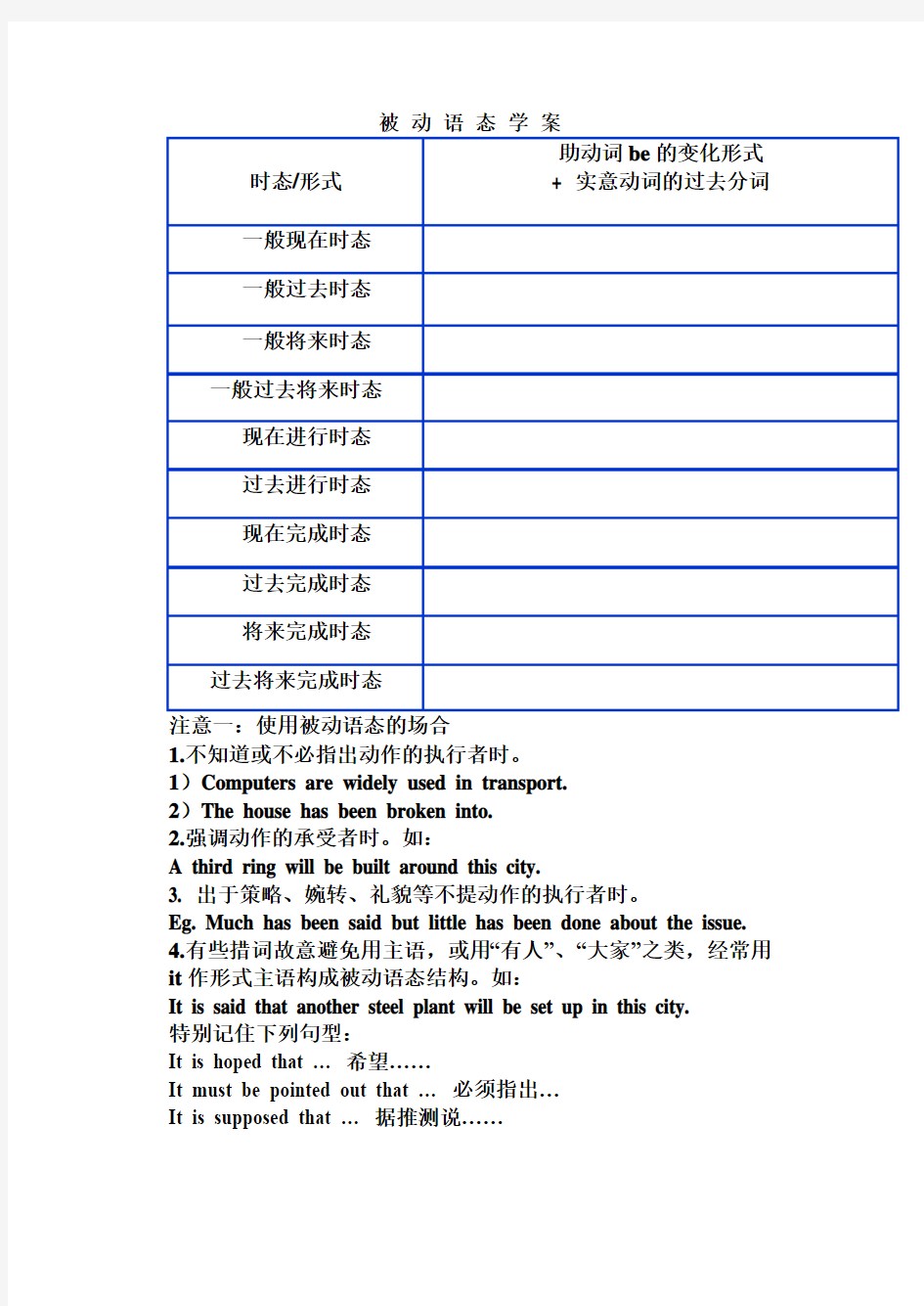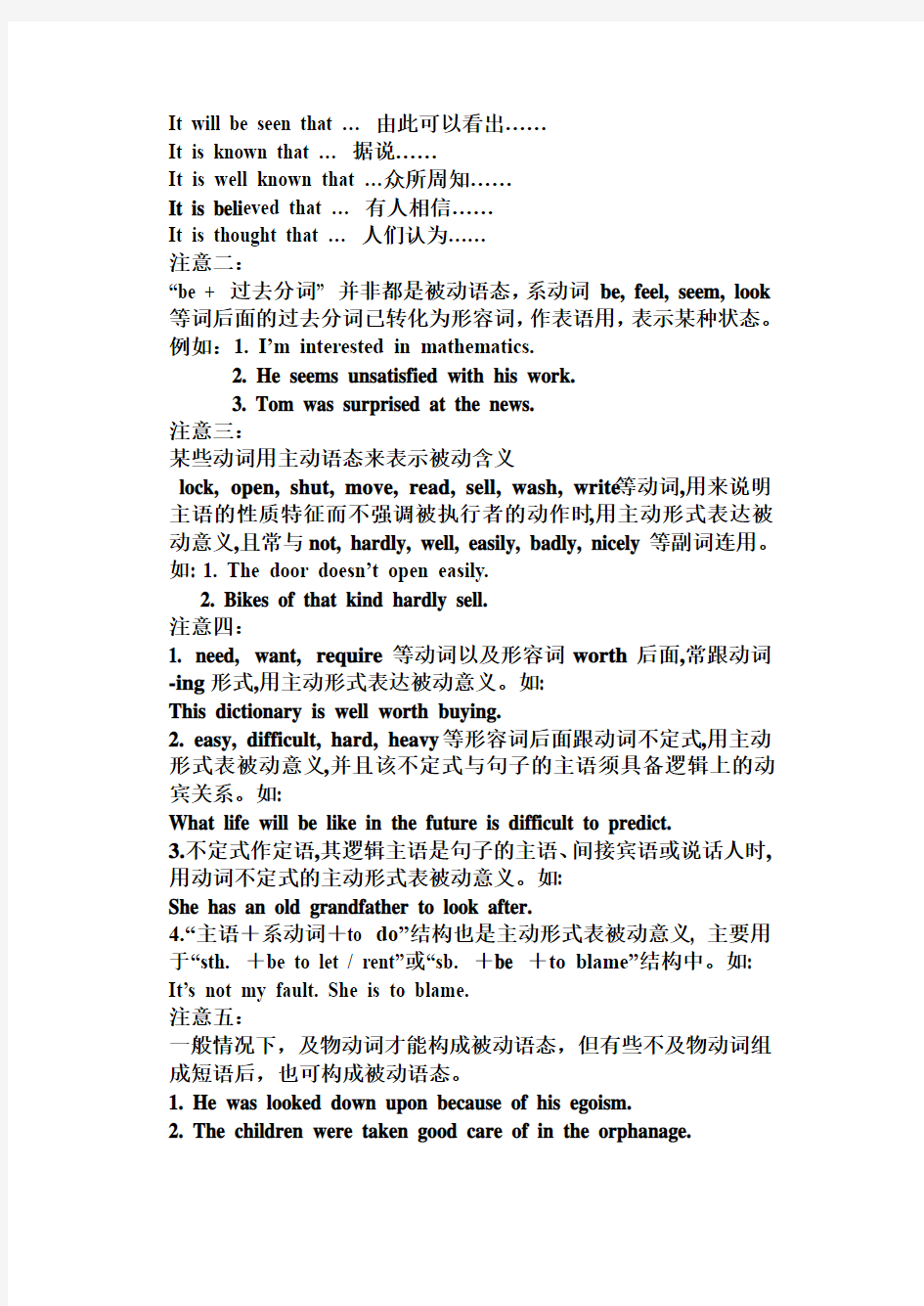被动语态学案


1.不知道或不必指出动作的执行者时。
1)Computers are widely used in transport.
2)The house has been broken into.
2.强调动作的承受者时。如:
A third ring will be built around this city.
3. 出于策略、婉转、礼貌等不提动作的执行者时。
Eg. Much has been said but little has been done about the issue.
4.有些措词故意避免用主语,或用“有人”、“大家”之类,经常用it作形式主语构成被动语态结构。如:
It is said that another steel plant will be set up in this city.
特别记住下列句型:
It is hoped that … 希望……
It must be pointed out that … 必须指出…
It is supposed that … 据推测说……
It will be seen that … 由此可以看出……
It is known that … 据说……
It is well known that …众所周知……
It is beli eved that … 有人相信……
It is thought that … 人们认为……
注意二:
“be + 过去分词” 并非都是被动语态,系动词be, feel, seem, look 等词后面的过去分词已转化为形容词,作表语用,表示某种状态。例如:1. I’m interested in mathematics.
2. He seems unsatisfied with his work.
3. Tom was surprised at the news.
注意三:
某些动词用主动语态来表示被动含义
lock, open, shut, move, read, sell, wash, write等动词,用来说明主语的性质特征而不强调被执行者的动作时,用主动形式表达被动意义,且常与not, hardly, well, easily, badly, nicely等副词连用。如: 1. The door doesn’t open easily.
2. Bikes of that kind hardly sell.
注意四:
1. need, want, require等动词以及形容词worth后面,常跟动词-ing形式,用主动形式表达被动意义。如:
This dictionary is well worth buying.
2. easy, difficult, hard, heavy等形容词后面跟动词不定式,用主动形式表被动意义,并且该不定式与句子的主语须具备逻辑上的动宾关系。如:
What life will be like in the future is difficult to predict.
3.不定式作定语,其逻辑主语是句子的主语、间接宾语或说话人时,用动词不定式的主动形式表被动意义。如:
She has an old grandfather to look after.
4.“主语+系动词+to do”结构也是主动形式表被动意义, 主要用于“sth. +be to let / rent”或“sb. +be +to blame”结构中。如: It’s not my fault. She is to blame.
注意五:
一般情况下,及物动词才能构成被动语态,但有些不及物动词组成短语后,也可构成被动语态。
1. He was looked down upon because of his egoism.
2. The children were taken good care of in the orphanage.
